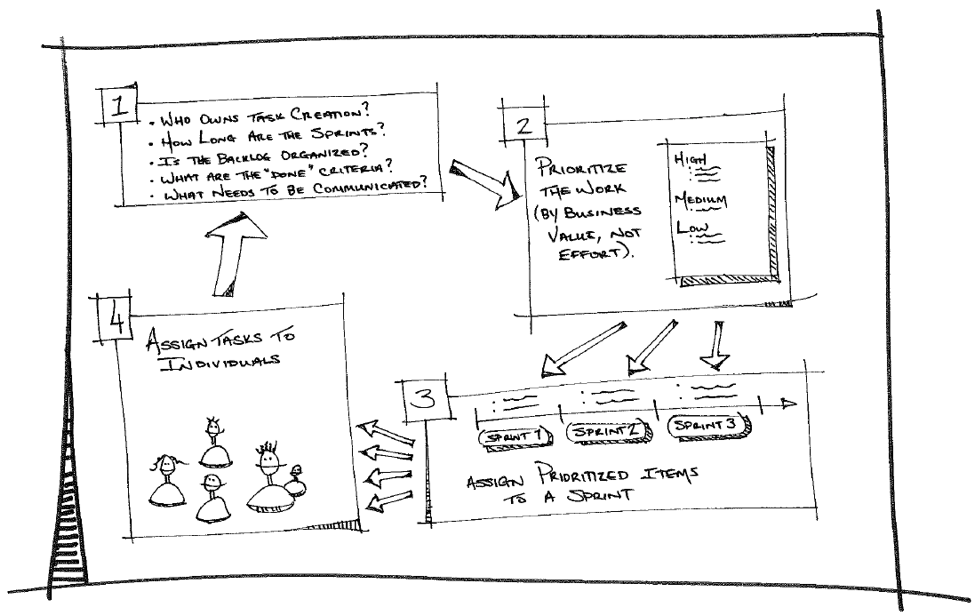Habanero builds websites. It’s more complicated than that, but when it comes down to it, and if you asked our clients, that’s what we do. Some of them are small, relatively easy projects, but a lot of them are very large, built by teams of a dozen people or more, over many months and sometimes even years.
There are stages: requirements gathering, user studies, design, planning, prototyping, coding, testing, and deployment (plus many others, and not always in this order). There are stakeholders, product owners, developers, testers, and users. There are often strict requirements for both budget and timeline.
Laid out like this, web development sounds a lot like software development, and it is. That’s why our project managers often use agile methodologies to see a project through. This post is what I’ve learned about applying one part of sprint planning–an agile methodology–to what we do at Habanero.
Sprints are an agreed-upon period of time, usually a few weeks, during which the development team will complete an agreed-upon quantity of work. They occur repeatedly and consecutively until all of the work has been completed or the project is finished.
The goal of a sprint planning meeting is to decide which portion of the remaining work will be completed within the budget and time constraints in the coming sprint, but these meetings have a number of secondary benefits:
- They help to focus effort on the work with the highest business value
- They help keep the entire team on the same page
- They create a dialogue between the client and the development team of what scope is being delivered (this one’s important)
The benefit of a regular, productive dialogue between the client and the team can’t be overstated. These meetings work on the understanding that there is more work to be done than can be completed in the current sprint, and the participants must agree which tasks will make the cut. This kind of collaboration leads to great discussions about the value of each task, which in turn helps to keep everyone aligned and the project moving forward.
Despite all of the on-the-side gains sprint planning meetings can provide, they’re actually a very simple and structured process. Ours look this:

When the meeting is done, the team has a clear picture of the path forward, the project manager knows exactly which deliverables they’re accountable for and when, and the client has greater visibility into what progress is being made on a week-to-week basis.



.jpeg?bc=white&la=en&mw=416&modified=20251202191043&hash=E64AA9DFFAE8D1AC27890831F714D5B0FA2FEBB2)

